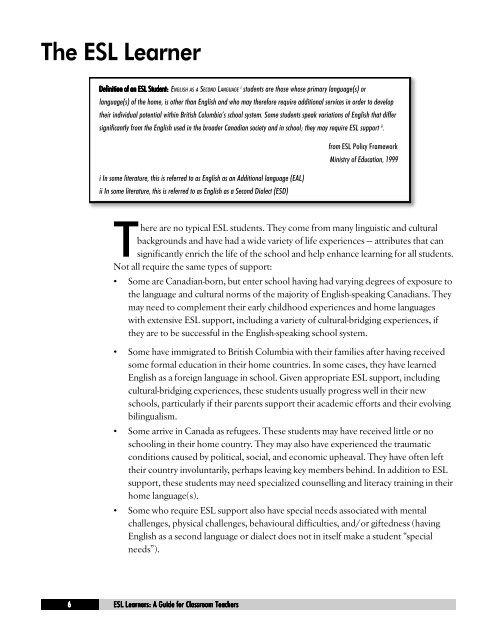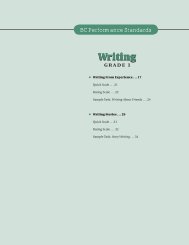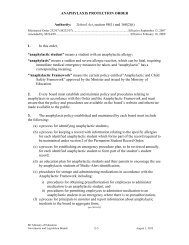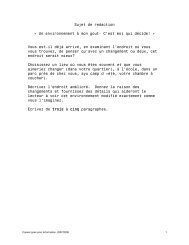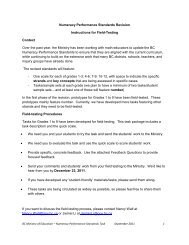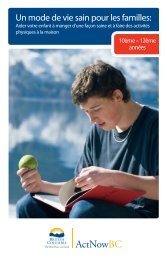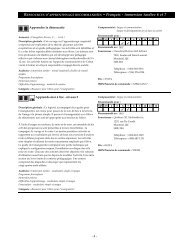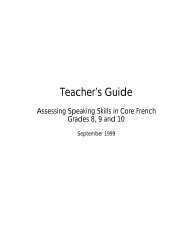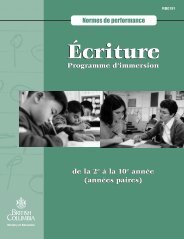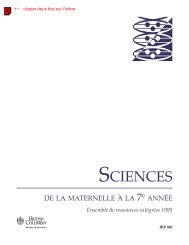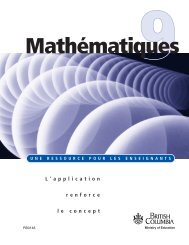A Guide for Classroom Teachers - Education
A Guide for Classroom Teachers - Education
A Guide for Classroom Teachers - Education
You also want an ePaper? Increase the reach of your titles
YUMPU automatically turns print PDFs into web optimized ePapers that Google loves.
The ESL Learner<br />
6<br />
Definition Definition of of an an ESL ESL ESL Student: Student: ENGLISH AS A SECOND LANGUAGE i students are those whose primary language(s) or<br />
language(s) of the home, is other than English and who may there<strong>for</strong>e require additional services in order to develop<br />
their individual potential within British Columbia’s school system. Some students speak variations of English that differ<br />
significantly from the English used in the broader Canadian society and in school; they may require ESL support ii .<br />
i In some literature, this is referred to as English as an Additional language (EAL)<br />
ii In some literature, this is referred to as English as a Second Dialect (ESD)<br />
There are no typical ESL students. They come from many linguistic and cultural<br />
backgrounds and have had a wide variety of life experiences — attributes that can<br />
significantly enrich the life of the school and help enhance learning <strong>for</strong> all students.<br />
Not all require the same types of support:<br />
• Some are Canadian-born, but enter school having had varying degrees of exposure to<br />
the language and cultural norms of the majority of English-speaking Canadians. They<br />
may need to complement their early childhood experiences and home languages<br />
with extensive ESL support, including a variety of cultural-bridging experiences, if<br />
they are to be successful in the English-speaking school system.<br />
• Some have immigrated to British Columbia with their families after having received<br />
some <strong>for</strong>mal education in their home countries. In some cases, they have learned<br />
English as a <strong>for</strong>eign language in school. Given appropriate ESL support, including<br />
cultural-bridging experiences, these students usually progress well in their new<br />
schools, particularly if their parents support their academic ef<strong>for</strong>ts and their evolving<br />
bilingualism.<br />
• Some arrive in Canada as refugees. These students may have received little or no<br />
schooling in their home country. They may also have experienced the traumatic<br />
conditions caused by political, social, and economic upheaval. They have often left<br />
their country involuntarily, perhaps leaving key members behind. In addition to ESL<br />
support, these students may need specialized counselling and literacy training in their<br />
home language(s).<br />
• Some who require ESL support also have special needs associated with mental<br />
challenges, physical challenges, behavioural difficulties, and/or giftedness (having<br />
English as a second language or dialect does not in itself make a student “special<br />
needs”).<br />
ESL ESL Learners: Learners: A A <strong>Guide</strong> <strong>Guide</strong> <strong>for</strong> <strong>for</strong> <strong>Classroom</strong> <strong>Classroom</strong> <strong>Teachers</strong><br />
<strong>Teachers</strong><br />
from ESL Policy Framework<br />
Ministry of <strong>Education</strong>, 1999


